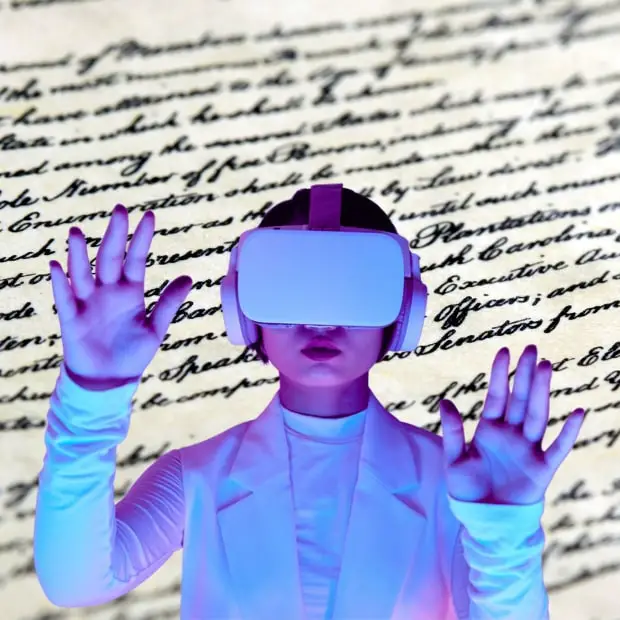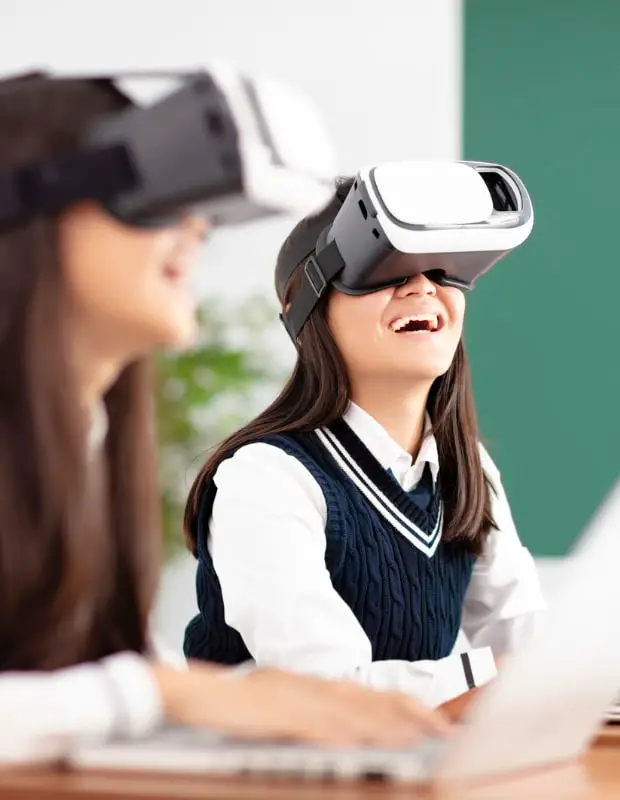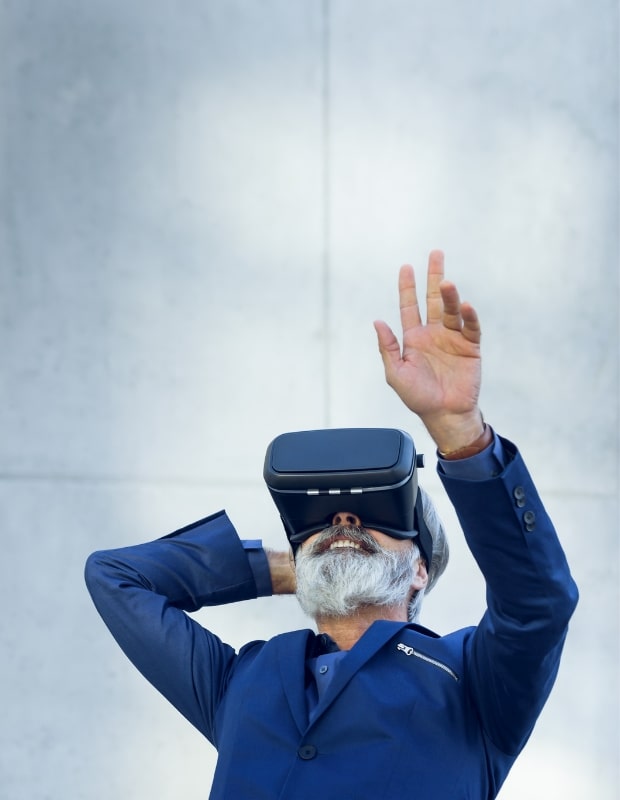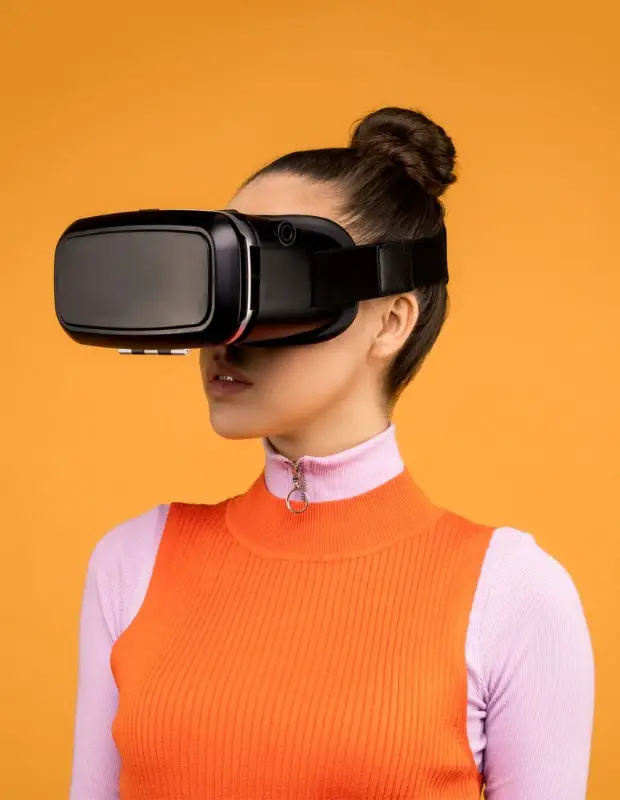
Virtual reality is an immersive experience that simulates a physical presence in another location or virtual space.
VR has many applications, but its most relevant use for writers right now is as a tool for creating immersive experiences for readers. As a writer and researcher, I started thinking about how this will affect my work and change the writing ecosystem. How will virtual reality change the way we read, research, and write? How can it be used to boost readers’ immersion in a fictional world? Does it currently have any other applications for writers? VR technology has already become more accessible to consumers with affordable headsets like the Oculus Rift, HTC Vive, and Google Cardboard, so it’s only a matter of time before reading and writing in VR becomes widespread. If you’re interested in learning more about the future of virtual reality and writing, read on…
The Future Of Reading
Reading is an essential part of the writing process. Reading and writing are so closely linked that we speak of reading as “writing on paper with our eyes”. However, this process has changed significantly in the digital age. Reading on-screen (phone, laptop, kindle) is already more popular than reading a paperback. It’s only a matter of time before VR becomes a reading medium as well. The convenience of using our smartphones as reading devices has fueled the widespread digitalization of content and the fall of many traditional publishing companies that failed to adapt to the new circumstances. VR will probably be more comfortable than reading on a screen because of the immersive experience it offers. It will therefore become the preferred choice for readers of the future. VR is also likely to change reading in other ways. For example, it might change the way we read long narratives, increase our reading speed, or make us less empathetic. It might also change how we read non-fiction, and learn new concepts. At this point, it’s not recommended to spend more than 20 minutes at a time in a VR space because of eye fatigue. But once this is solved, I can imagine many new VR reading formats popping up.
Virtual Reality and Writing – What to Expect?
The question must be asked: can we even write in VR? And if so, how does the process compare to writing on paper? VR writing might be done in a few ways, like writing directly in VR with built-in input devices (e.g. controllers used for playing video games). This will probably look very different from how we write on paper. Games such as VRChat already incorporate this extremely well by allowing players to control VRChat avatars and draw in-game. There are even art worlds dedicated to drawings that other users have created. Writing in VR with a keyboard and then exporting the text to a word processing software will probably incorporate the same process as writing on a computer, except that the text will be saved on a cloud storage service rather than on a local computer. Then there’s writing on paper and then transferring it to VR. This might be a more comfortable approach because it’s similar to how we currently write. Alternatively, VR might enable more immersive writing by turning it into a giant whiteboard and using motion recognition to help us sculpt our sentences. I can also imagine speech-to-text technology successfully deployed in a VR writing environment. You would speak your mind, and the machine learning algorithm would translate your voice into an immersive writing experience.

Writers in VR: Crafting Engaging Stories
For a long time, the idea of creating content in VR has been treated more like a gimmick than a serious pursuit. But now that technology is becoming more advanced, virtual reality is poised to change how we consume content. VR storytelling, for example, differs from any other medium because VR allows for a special connection between the reader and the story. It enables the reader to experience what it’s like to be the character in the story or to be the person in a certain scene. This way, readers can experience what the characters are feeling, see what they’re seeing, and even do what they’re doing. VR storytelling is also different from traditional storytelling because it allows readers to decide how deeply they want to engage with the content. They can skim, pause, or even skip parts of the story if they choose to. Content like VTubers which rely on motion tracking and virtual reality technology, have had an unprecedented impact on the internet. Millions of viewers tune in every day to watch and interact with these virtual characters that are being controlled by a content creator behind the scenes.

Writing To Increase Empathy
VR can extend human empathy in a way that no other medium can. It can also simulate the experiences of other people to help people understand their perspectives. Unfortunately, the current state of technology can’t do either of these things very well. But once the technology improves, VR will be the best way to increase empathy among readers. Empathy is the ability to understand and share the feelings of another person. Reading about a certain experience is one way to experience empathy. However, VR can make it possible to share someone’s perspective by letting the reader experience it from their point of view. For example, a writer could create a VR experience of what it’s like to be a refugee fleeing their home country. Such an experience would allow readers to imagine what it’s like to flee their country, travel to a different country, and try to start a new life there.
Virtual Reality For Research
VR can be used for research in much the same way as it’s used for storytelling. However, VR researchers need to consider how the technology affects the data they collect, and how the data affects the readers’ experience. The biggest problem with VR research is that it’s difficult to see the “bigger picture” from inside the virtual environment. Most times, researchers need to look at the data from outside the virtual environment to make sense of it. For example, VR researchers who want to study human behavior might want to create an experience in which people are interviewed. However, they’ll need to observe the interview from outside the virtual environment to understand what the interviewees are saying.

Final words
VR is a new technology that is likely to alter nearly every aspect of our lives, including the way we communicate, create, and interact with other people. The future of virtual reality is unknown, but it could become one of the most important technologies of our time. Next up, you may want to explore a guide to new technologies that’ll help you relax.
Hey there, welcome to my blog! I'm a full-time entrepreneur building two companies, a digital marketer, and a content creator with 10+ years of experience. I started RafalReyzer.com to provide you with great tools and strategies you can use to become a proficient digital marketer and achieve freedom through online creativity. My site is a one-stop shop for digital marketers, and content enthusiasts who want to be independent, earn more money, and create beautiful things. Explore my journey here, and don't forget to get in touch if you need help with digital marketing.

